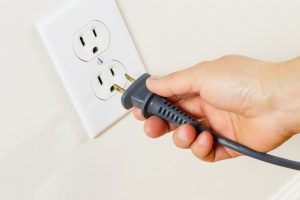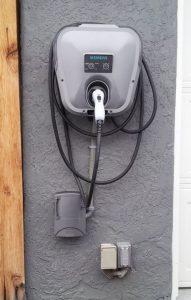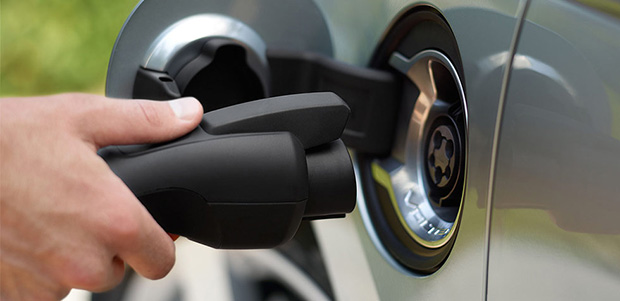Trading a gas pump for a plug-in is a wonderful thing. It’s far more convenient, saves you time, and keeps you from breathing toxic fumes after fueling. Charging is a different experience all together and understanding the ins and outs can take some time. I’ve been driving electric for over two years and I’m still learning!
If you’re looking to drive electric, you may want to get ahead of the learning curve now. It will save you some time and it may even help you save some money!
Level 1 Charging: Standard Outlet

Hold on! Let’s break this down. First of all, you’ll rarely need to do a full charge from 100% empty to a full charge. If you drive 40 miles per day and charge overnight, you’ll be back to full in 9 hours. Think about charging your cell phone. Most of us plug in our phones at night once we hit the hay. We don’t think about how long it’ll take to charge once we’re sleeping, right? We’re just happy that charging is complete once we wake up and need to start our day.
What if you have to drive more than 40 miles in one day, say 80 miles? Yes, it would take 18 hours to get a full charge, but with a 9-hour overnight charge, you’ll be ready for your normal commute the next day. And, if you drive less than 40 miles per day or charge for more than 9 hours, you’ll work back up to a full charge over the next day or so.
If you need to drive 80 miles on consecutive days, you’ll need a “plan b”. That gas-guzzler you keep around for long trips? You may have to opt for that one. Or, there may be public EV chargers in your area. You can sneak in a movie, dinner, or shopping while you plug in.
Beyond range issues, Level 1 may not be suitable for primary charging in all cases. In extreme climates, more power may be required to maintain proper battery temperatures. In these cases, Level 2 charging may be more appropriate.
Level 2 Charging: Charging Station
 Level 2 supplies 240V, like what an electric dryer or oven uses. It goes through a box and a cord that improves safety by waiting to send power to the plug until it’s plugged into an EV. Level 2 allows for a wide range of charging speeds, all the way up to 70 miles of range per hour of charging. Both Level 1 and Level 2 charging stations simply deliver household electricity to the car. Electronics within the car transform the power into the proper form which then charges the battery.
Level 2 supplies 240V, like what an electric dryer or oven uses. It goes through a box and a cord that improves safety by waiting to send power to the plug until it’s plugged into an EV. Level 2 allows for a wide range of charging speeds, all the way up to 70 miles of range per hour of charging. Both Level 1 and Level 2 charging stations simply deliver household electricity to the car. Electronics within the car transform the power into the proper form which then charges the battery.
Nissan recommends that you install a Level 2 charging station at home. If your budget allows, you can consider if part of the cost of the car (it’s an added expense). There’s also a 30% federal tax credit (up to $1,000) for installing EV charging, which can make it less expensive. Still, if you are planning to use your EV for a daily commute of 40 miles or less per day, you should at least consider using Level 1 charging at home. You can always add a Level 2 charging station later if you decide you need it.
In the works currently, 20,000 public Level 2 charging stations (limited to 6.6 kW) will be installed. Even if you only have Level 1 charger in your garage, you may have access to convenient Level 2 charging available while your car is parked and you’re doing something else.
I’m already beginning to see these charging stations in my town and surrounding area. They now make it possible to drive 60 miles and pick up about 50 miles of range in 4 hours while you’re having fun, thus easily driving over the single-charge range while always keeping a healthy reserve.

